The Revolutionary War (1775)

The Revolutionary War was the one that started it all. At first, the United States Army uniform was based on the British military, but it quickly gained a distinguishable blue coat.
This is why the British were often called “Red Coats.” The uniforms were also paired with white overalls and waistcoats.
Regulations Published (1779)

Regulations were published in 1779 that would define the United States Army uniform as blue coats with colored facings that denoted region. White would be New England, red for Mid-Atlantic, and blue for the South. Musicians also had their own uniforms, but the colors were reversed.
That being said, this didn’t last long. In 1782, blue coats faced with red became standard for everyone except generals and staff officers.
The War of 1812 (1812)

Outfits began to change quite a bit at this point out of necessity. A shortage of blue cloth meant uniforms were made out of a variety of colors including drab, black, brown, and gray. This made it difficult to tell one soldier from another, so regulations were revised in 1813.
The US Army dropped the red color and swapped to blue and gray coats. Now, they featured high-necked collars and front-facing buttons. This is the same time that the “tombstone” shako caps made their appearance.
The Mexican-American War (1845)

By the time the Mexican-American War rolled around in 1845, US Army uniforms were looking a little different. This is when roundabouts appeared and were most often made of blue wool. Pants now featured vertical stripes while sleeves had chevrons that marked rank.
The tombstone cap didn't last long as it was replaced with forage folding caps. Frock coats were also introduced and became mandatory for Americans, but there was still a lot of work to do.
Frock Coats (1851)

In 1851, there was another set of changes. Some ideas stuck around while others were quickly replaced. The frock coat had become standard by now, but colored accents were added that would distinguish one branch from another.
For example, blue indicated infantry while red meant artillery. The frock design was based on the French version.
The Civil War (1861)
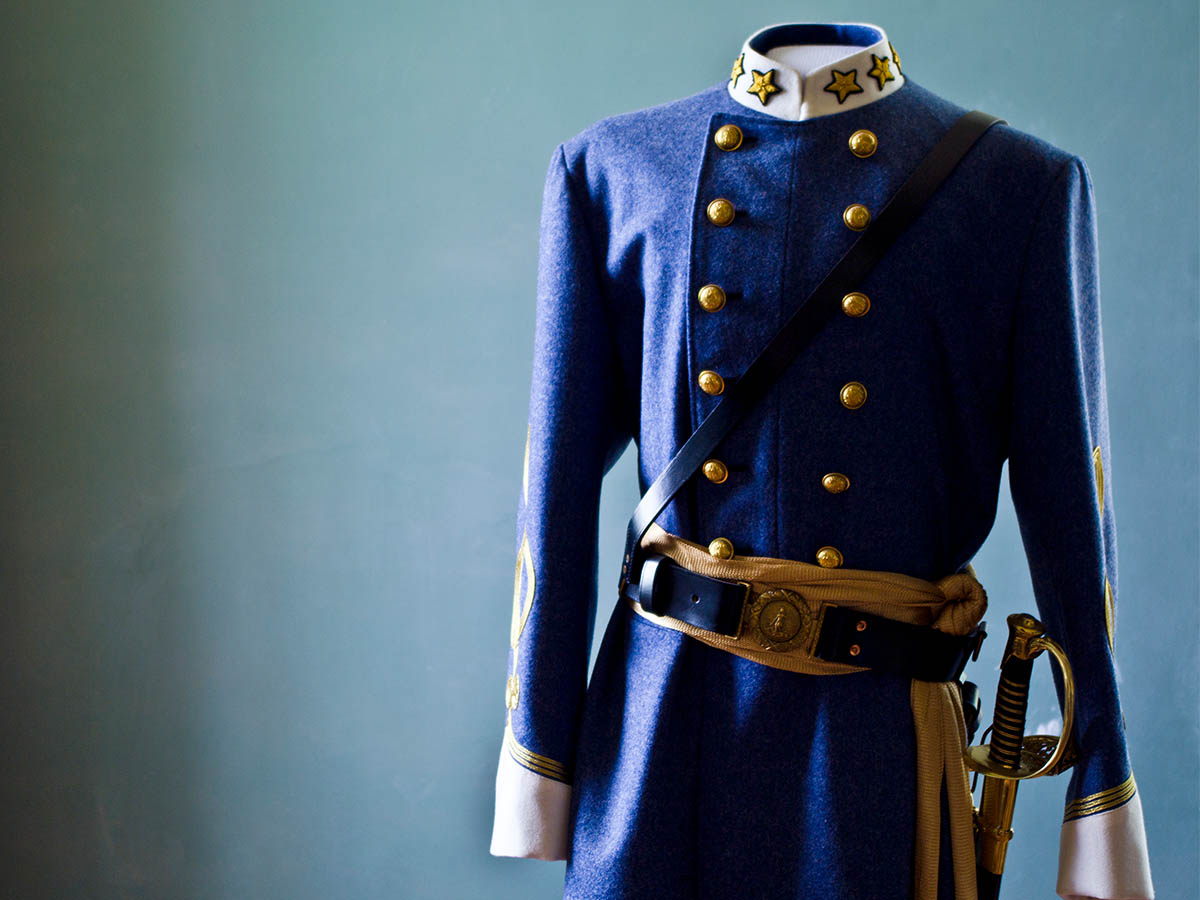
The Civil War was unlike any war up until this point. Uniforms varied quite a bit because of the nature of the conflict. That being said, the biggest change occurred with hats.
Soldiers used brass branch badges to denote their units. Since many of the uniforms were homemade, it’s difficult to nail down a “typical” Civil War attire today.
The Spanish-American War (1898)

It was time to become more uniform -- pardon the pun. Uniforms were replaced by khaki field outfits that were inspired by the British.
They were no longer made of wool, and special campaign hats were issued. Over the span of a year, at least four different patterns were released for coats.
World War I (1914)
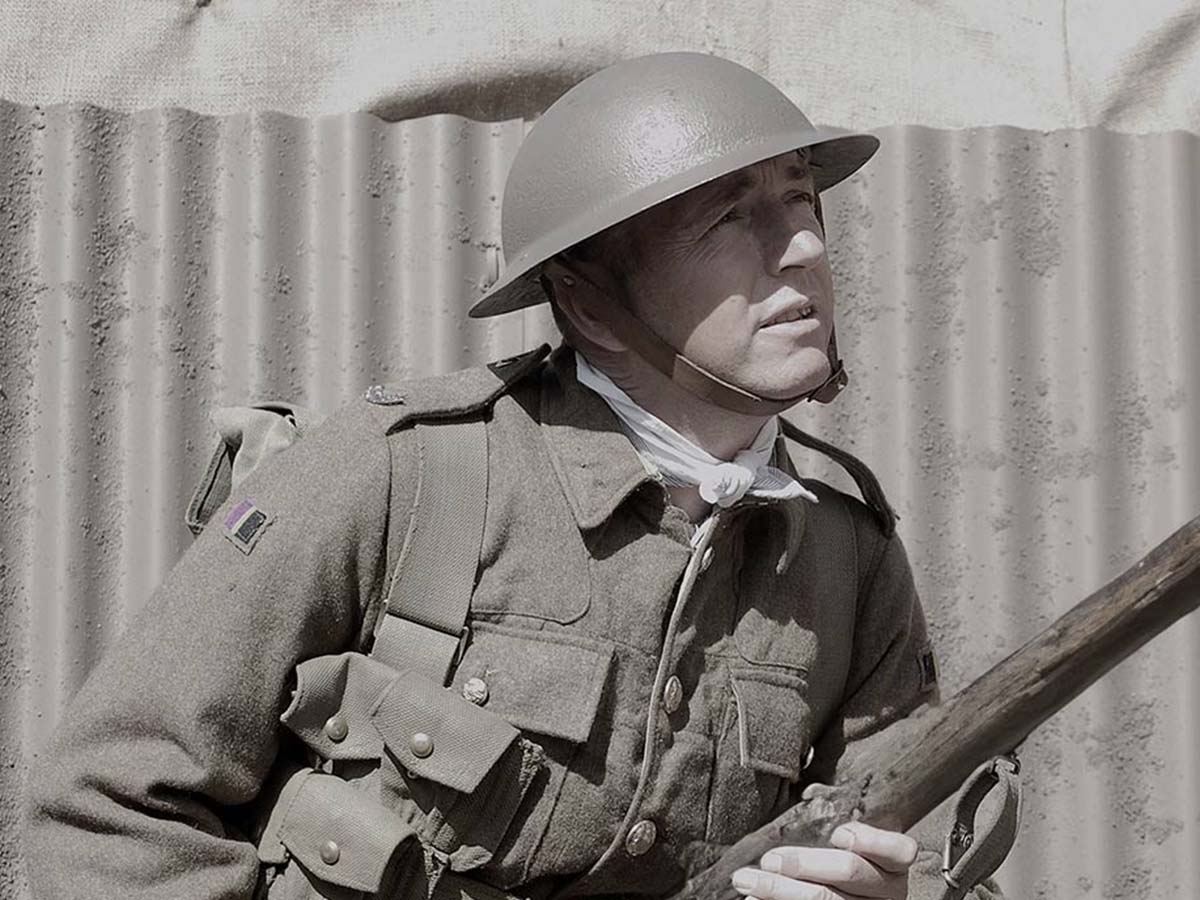
World War I was the first major war that America participated in, and it's also one of the most recognizable uniforms in history. Fatigues remained largely unchained, but khaki was ditched in favor of olive.
Soldiers also wore puttees around their legs, and the British inspired our army to adopt the classic Brodie Helmet. The Brodie Helmet provided more protection from overhead artillery.
World War II (1939)

Onto the second major World War. The United States didn't change their uniforms too much during this time. The Brodie Helmet was replaced with the M1 helmet because it provided more protection on the sides, as well as protected the top of the head better.
Instead of the wool jacket, soldiers received windbreakers. In some cases, a specialized uniform worn by those that had specific jobs, like parachute jumpers. During this time, the US Army began specializing roles, and the uniforms had to display that.
The Korean (1950) and Vietnam War (1955)

Uniforms during these two wars were very similar. The olive-green utility uniform became common by 1952. The color remained the primary choice until 2010 when it was swapped to blue ASU.
However, by 2015, the color would be completely phased out. The most significant change during this era was the introduction of the Combat and Cargo Packs.
Battle Dress Uniform (1981)

On October 1, 1981, the Army introduced the Battle Dress Uniform (BDU). This was designed from the tropical combat uniform used during the Vietnam war.
The coat was made out of a blend of nylon and cotton in the woodland camouflage pattern, and soldiers would be issued matching caps and trousers. Unfortunately, the BDU uniform was too hot for tropical climates, so the Army authorized the use of the old uniform until adjustments were made.
Desert Storm (1990)

Olive green obviously wasn't going to work when your soldiers were fighting on desert sand. By the 1990s, the Army had adopted a range of camouflage patterns to help conceal troops.
At first, the patterns included the woodland and the three-color desert designs, but it quickly expanded. The new uniforms also had a few stylistic changes, which introduced a new, smaller collar.
The Army Combat Uniform (2004)

Since 1991, the Army had gone through several camouflage patterns. The Army Combat Uniform was introduced in 2004 and was modeled after the Marine's digital pattern uniform.
Soldiers were also happy to see the introduction of moisture-wicking socks, T-shirt, coat, pants, combat boots, and patrol cap.
The Operation Enduring Freedom Pattern (2010)

In 2010, it was time for another change. The Army Combat Uniform was converted to the Operation Enduring Freedom pattern, also known as “Multicam.”
This pattern was far more effective in Afghanistan's terrain. They also prevented third-degree burns and were treated with permethrin to protect soldiers from insect-borne diseases like malaria.
The Operational Camouflage Pattern (2015)
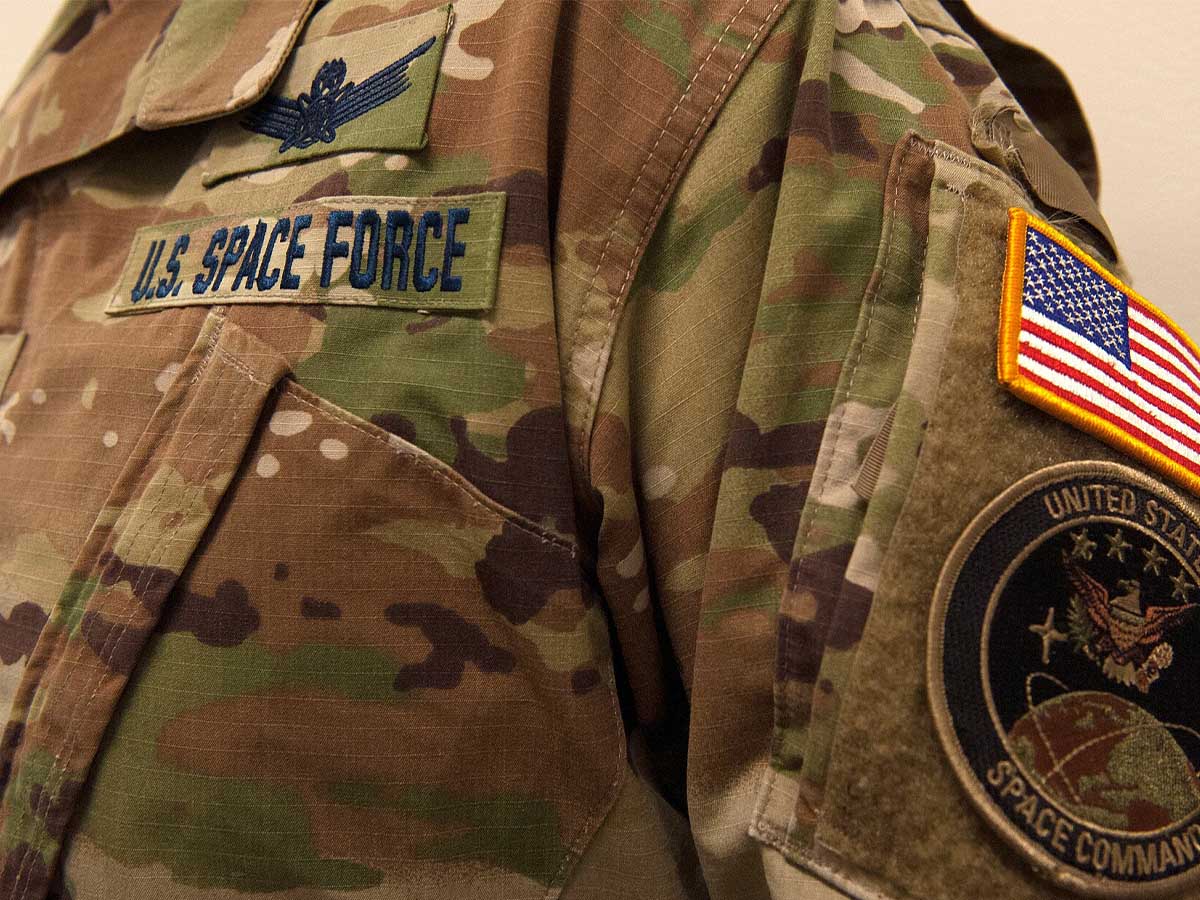
Multicam didn’t last long, however. In 2015, the Army changed the ACU pattern to the Operational Camouflage Pattern.
The colors vary by location – some need dark forest patterns while others need desert patterns. That being said, it generally has a four-to-six color palette that incorporates greys, tans, browns, beiges, and greens.
Pinks and Greens (2018)

Announced on Veteran’s Day 2018, the US military announced that it was bringing back an iteration of the WWII “pinks and greens” uniform. The original was introduced in the 1920s, but the new version will be redesigned for the needs of soldiers today.
The reason for this change is because it was “one of the flashiest and most striking uniforms ever authorized by the Army.” This uniform will have a complete “phase-in” by 2028.
Field Gear Evolves (1900s)

In the early 1900s, soldiers wore wool and linen uniforms, with loose trousers. U.S. soldiers also carried a haversack, an ammunition belt, a mess kit, and a gas mask, among many things. However, the numerous things soldiers had to carry could become exhaustive and hard to bear while on the field.
Throughout the 20th century, US Army field gear evolved to include new materials like canvas and nylon, making the equipment lighter and more durable. These adjustments complemented the soldier’s uniform, enabling greater mobility in harsh conditions. Field gear evolved with the times and so that soldiers' utilities were more acceesible and efficient to utilize.
Introduction to Unit Insignia (1918)
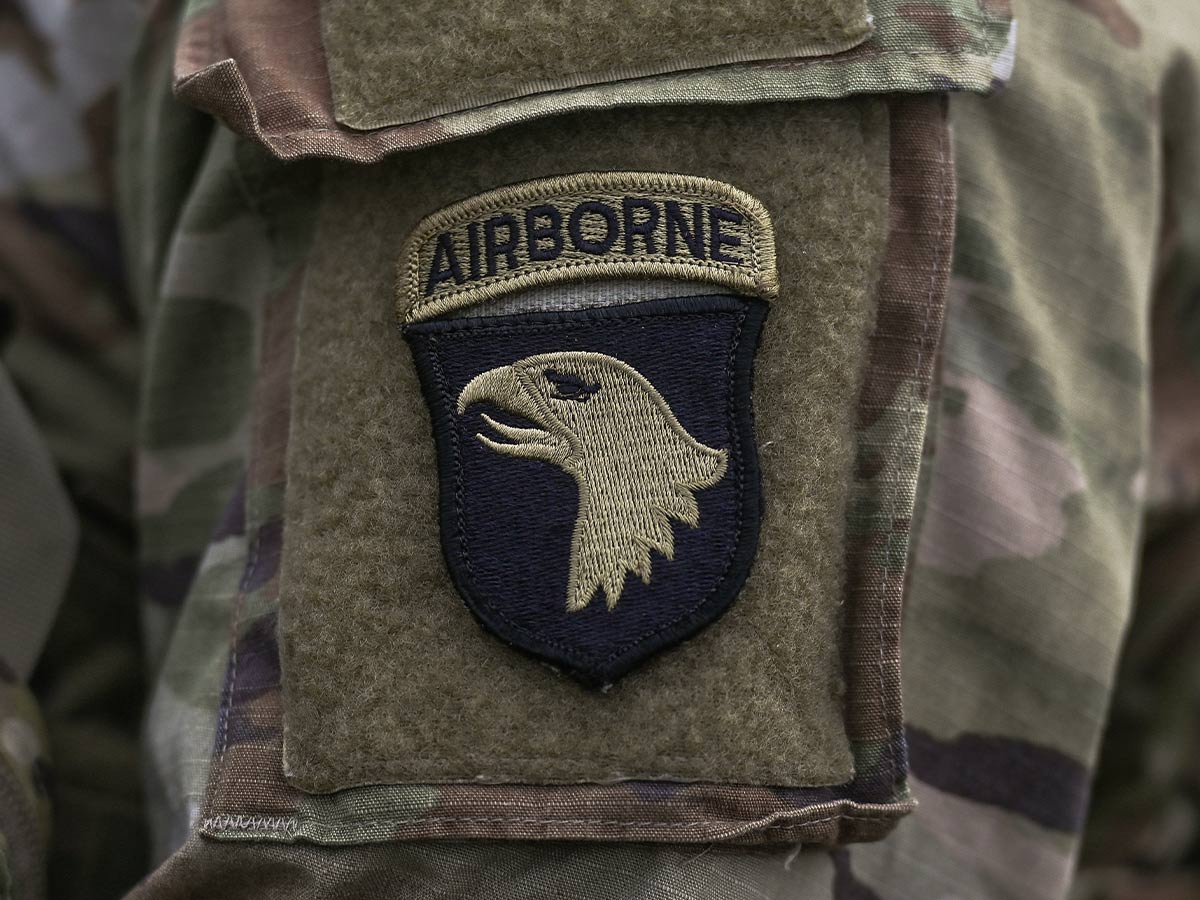
Unit Insignia, or Distinctive Unit Insignia (DUI), is worn by soldiers in the U.S. Army to convey their distinctive unit. The practice of assigning distinctive unit patches began during World War I. This tradition allowed different divisions to showcase their identity while boosting morale among troops.
Soldiers wear their coat of arms to signify unit affiliation and heritage. Before they were standardized, unit insignia weren’t often worn in the army, so there was probably confusion among ranks about who was in which unit. The confusion could have led to poor performance on the field, but now they are worn by all U.S. soldiers.
Combat Boots Replace Leggings (1940s)

During the 1940s, soldiers wore “leggings” or leg coverings to protect their lower legs and keep out debris. By WWII, strapped leggings had been replaced by combat boots for better resilience and ankle support. This change improved comfort and functionality for soldiers engaged in diverse terrains.
Combat boots proved more durable and reliable on the field. They protected U.S. soldiers' feet from wear and tear, and allowed them to focus on their duties rather than the fear of their legs and feet getting hurt. A necessary and effective uniform change for the U.S. Army!
Rank Insignia Adjustments (1955)

To maintain consistency, the US Army standardized rank insignias in the post-Korean War period, creating clear and unified symbols for soldiers of different ranks. Specialist ranks, created in 1920 but later abolished, were reactivated with a new structure. New insignias for specialists and different colors were also introduced.
Before these changes were made, some insignias were hard to identify in the field; hence, clearer and distinct insignias were created to replace the former ones. With adjustments made to improve visibility on the field of what units soldiers are in, it undoubtedly improved performance on the field and created necessary cohesion.
Camouflage Face Paint (Cold War Era)
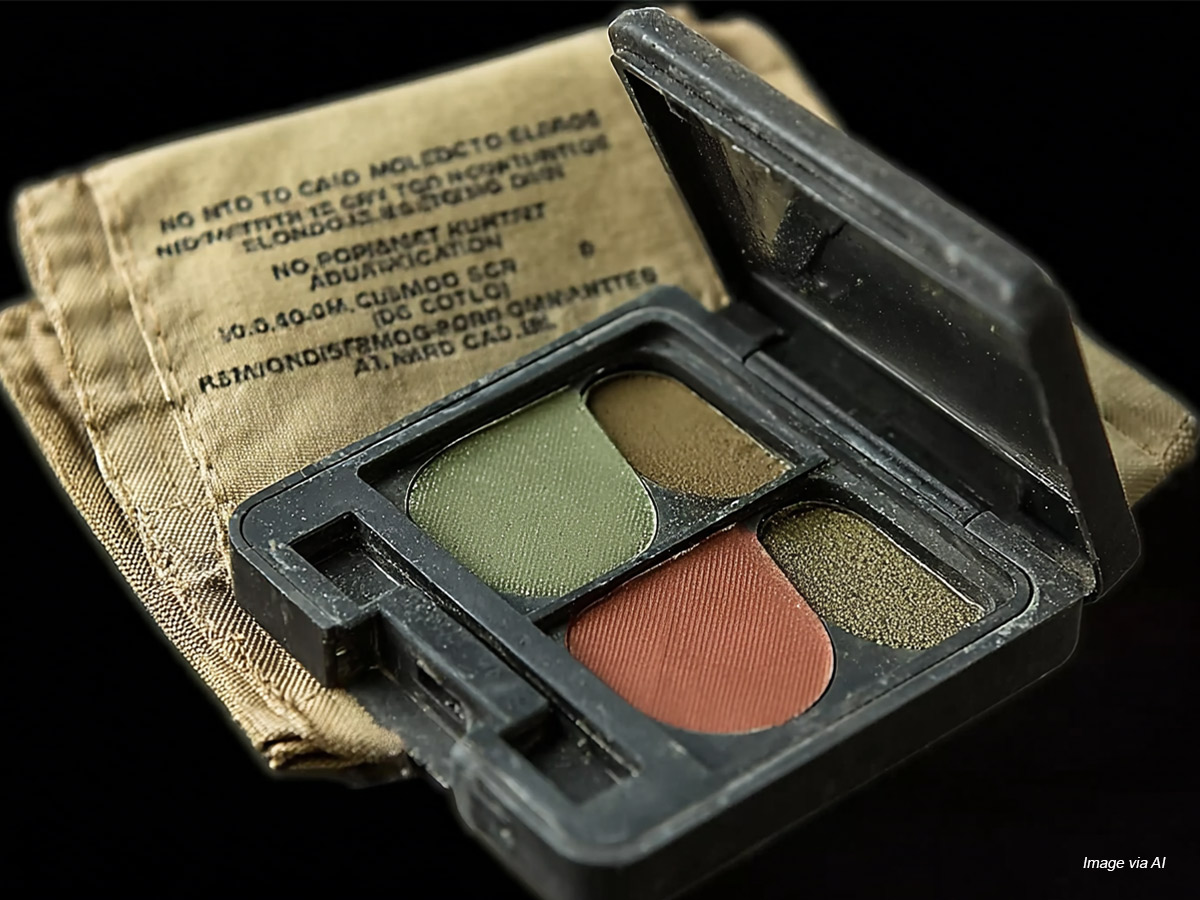
Although not technically part of the uniform, the introduction of camouflage face paint during this time further enhanced concealment on the battlefield, showing the Army’s growing emphasis on stealth. Before face paint, it seems soldiers fought on the battlefield with no guise of cover.
Without a means of camouflage for the face, U.S. Army soldiers were probably vulnerable to anything. Their whole body may have been adorned in camo, but if their face wasn’t, then it may not have amounted to much on the field. Camouflage face paint gives soldiers the advantage of stealth and surprise.
Introduction of Kevlar Helmets (1980s)
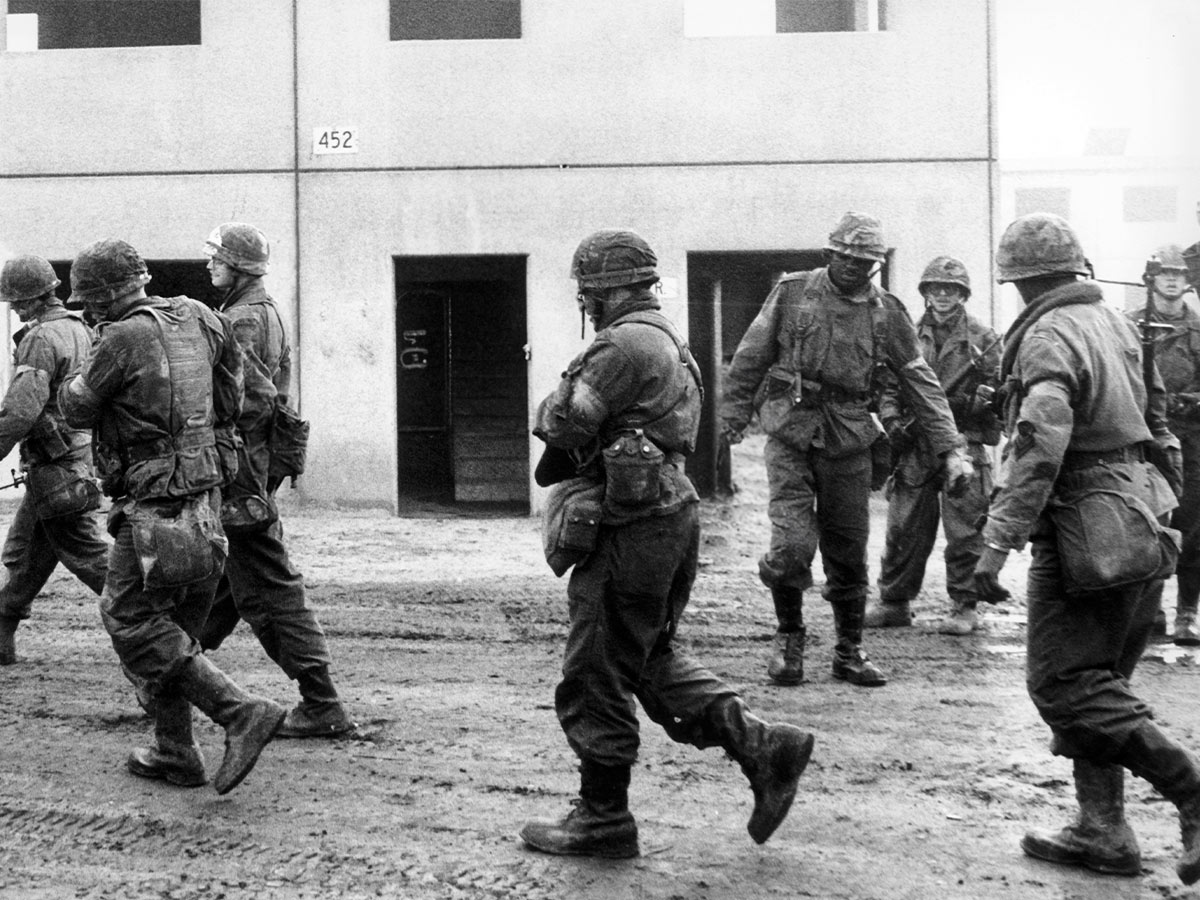
Before Kevlar helmets were implemented in the U.S. Army, soldiers used steel helmets. While they provided protection against shrapnel and projectiles, they were bulky and had limited protection against modern warfare. Replacing the older steel helmets, Kevlar helmets provided enhanced ballistic protection and were lighter, reducing neck strain during prolonged deployments.
DuPont’s Kevlar transformed protective materials, and once Kevlar-based helmets were introduced in the 1980s, the U.S. Army never went back. The PASGT helmet replaced the steel M1 helmet, a shift to a helmet that was lighter and more effective in protection.
The "Clean Appearance" Policy (2001)
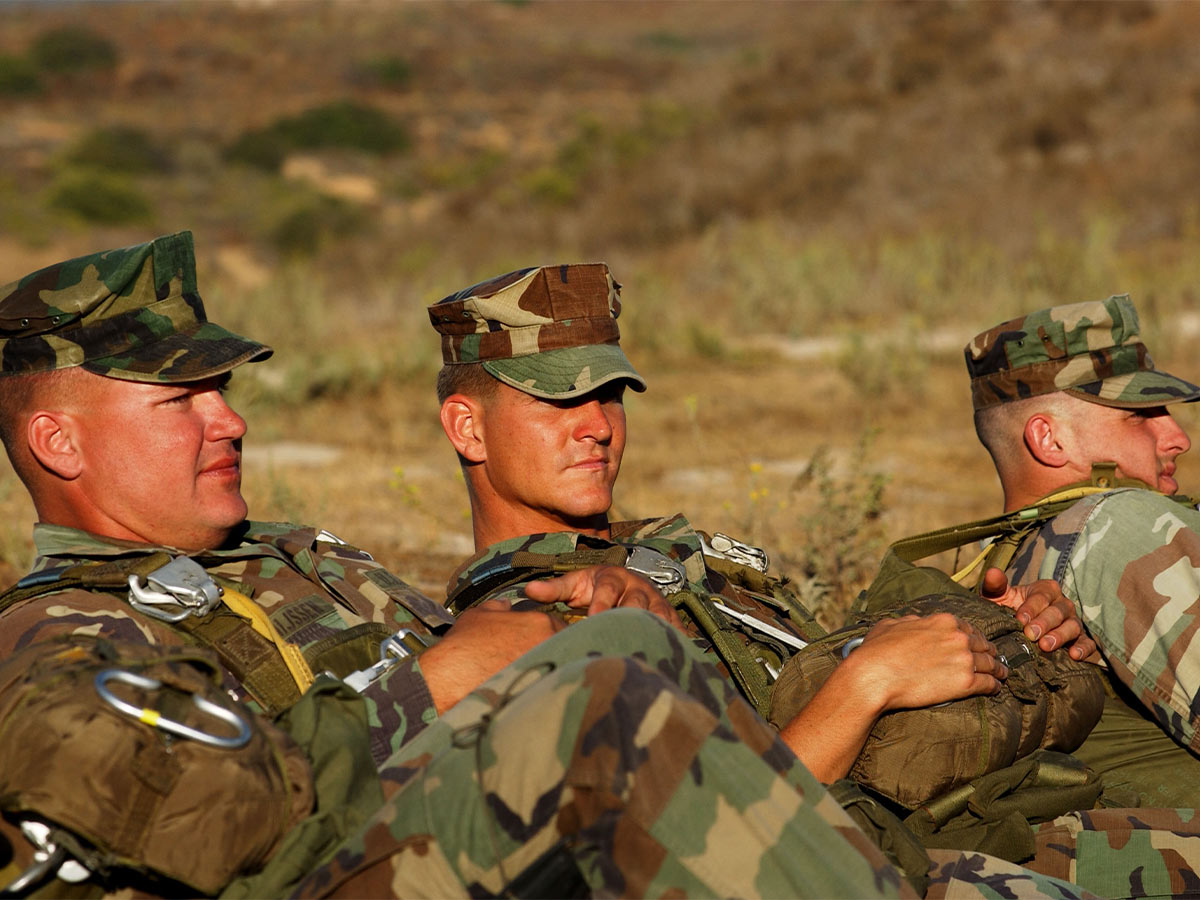
With the adoption of the Army’s physical fitness uniform, soldiers embraced a more polished appearance during training, emphasizing professionalism even in non-combat activities. The policy emphasizes a professional and disciplined appearance. While on duty, if a soldier is wearing civilian clothes, they are required to maintain a professional appearance, similar to the look of their uniform.
The policy takes into account other physical aspects, such as facial hair, jewelry, nails, and tattoos. The clean appearance policy conveys the same standards as the duty uniform, ensuring a conservative look, and applies to everyday clothes and non-combat tasks.
Operational Boot Color Changes (2005)
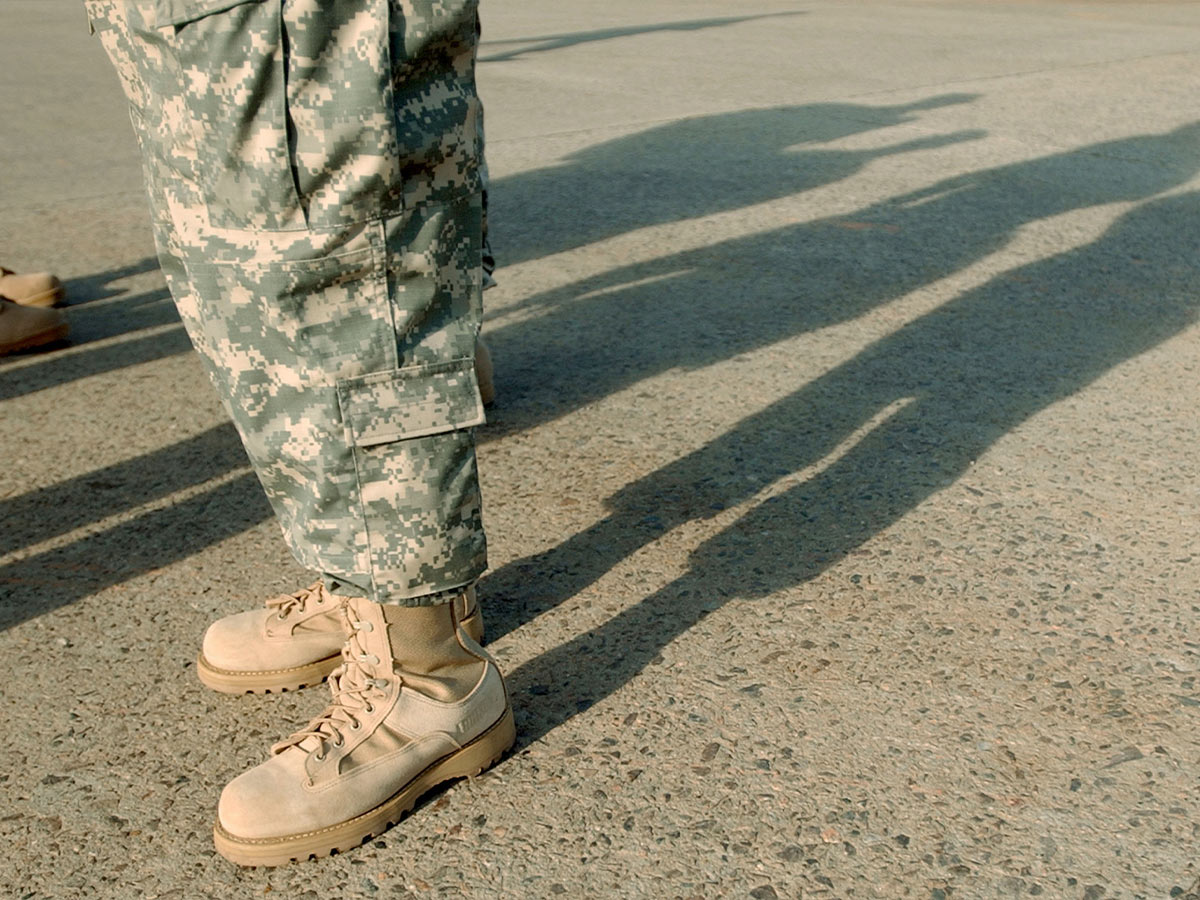
Before the U.S. Army switched to sand colored boots, they wore black boots. Tan or sand-color blends in better with the desert terrain, so the switch was effective and useful. Sand-colored combat boots became standard, matching the Army Combat Uniform (ACU).
Before the black boots, soldiers usually wore brown leather boots until the transition to sand color, which aided better environmental blending during campaigns in desert regions. The boot color change prompted easier camouflage, reduced heat absorption, and a reduced need for polishing.
Uniform Adaptations for Female Soldiers (2011)
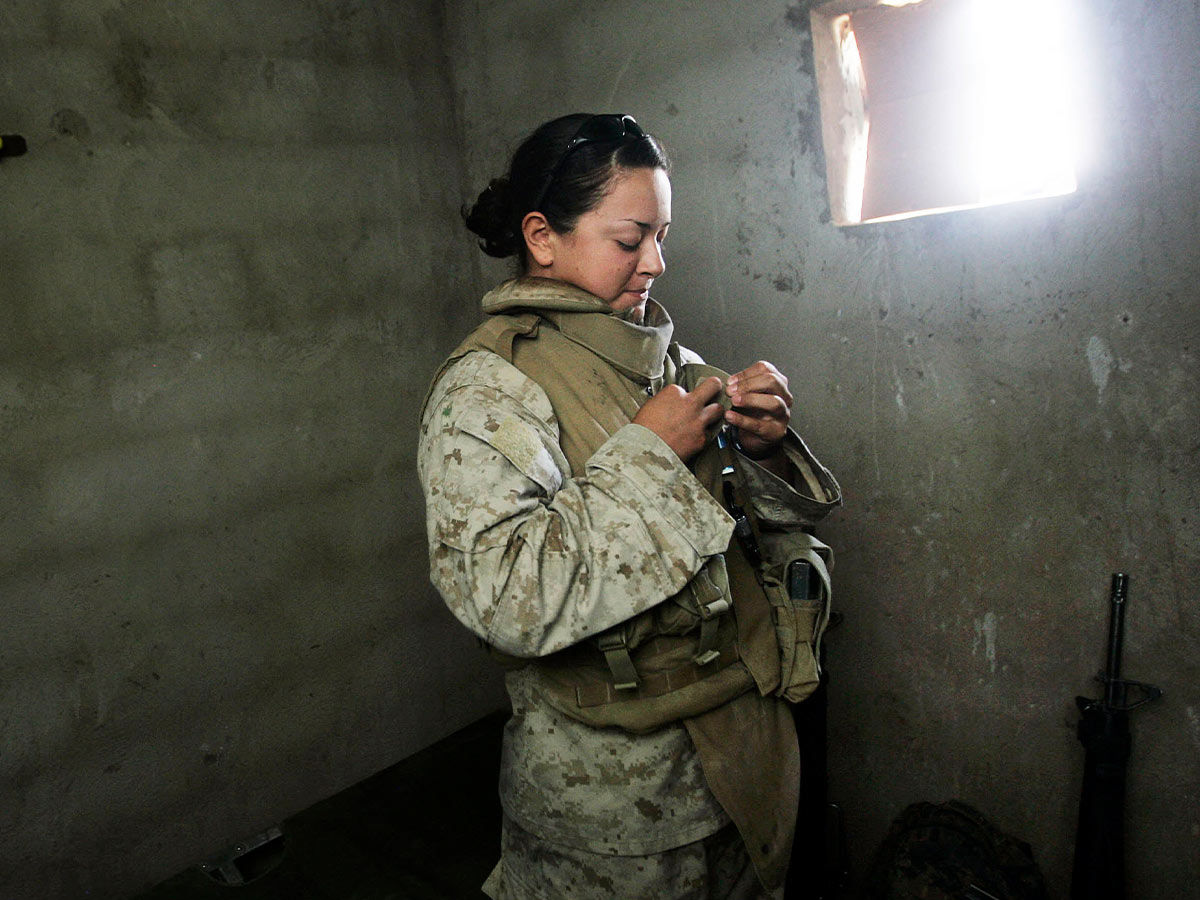
The U.S. Army is mostly catered to men, therefore, the uniforms were made to fit men and no one else. However, in 2011, uniform adaptations for female soldiers were underway, taking into account differences in fit and comfort, marking a landmark step for inclusivity.
The gear designed for men was too bulky and fit weird for women, which restricted their performance and negatively impacted their morale. Some redesigns for female soldiers include a narrow shoulder width, elastic waistband, adjusted chest and sleeve lengths, etc. These adaptations for female soldiers were a push to ensure everyone, no matter gender, had uniforms and equipment that allowed them to perform their best.
Velcro Name Tapes and Patches (2004 - Present)

Before Velcro was issued in the army, names were sewn on, and Velcro wasn’t a standard feature. With the introduction of Velcro fastenings, soldiers can quickly attach or remove name tapes, rank insignias, and unit patches, streamlining equipment organization. It was in the 1990s that Velcro was adopted for uniform applications.
Now, today, Velcro is the standard, and you’ll see name tapes attached to soldiers' uniforms with the material. Soldiers still have options regarding name tapes: they can opt to sew them or use Velcro if they prefer. However, Velcro is more flexible, as you can remove it from the uniform if you wish.
Integrated Climate Adaptability (2013)

If you’re job consists of high-intensity and grueling work, you’ll want your attire to adapt to the weather and environment. For U.S. Army soldiers, uniforms that adhere to the climate are important and effective for their duties. New uniform fabrics began incorporating moisture-wicking technology and UV protection, improving soldier capabilities across extreme weather conditions.
The U.S. Army focuses on material and design innovations so soldiers have comfort and enhanced job performance. These climate-adaptable uniforms have many facets, a few being layering systems that accommodate temperature ranges, waterproof and windproof materials, and breathable fabric.
Return of Service Dress Blues (2008)
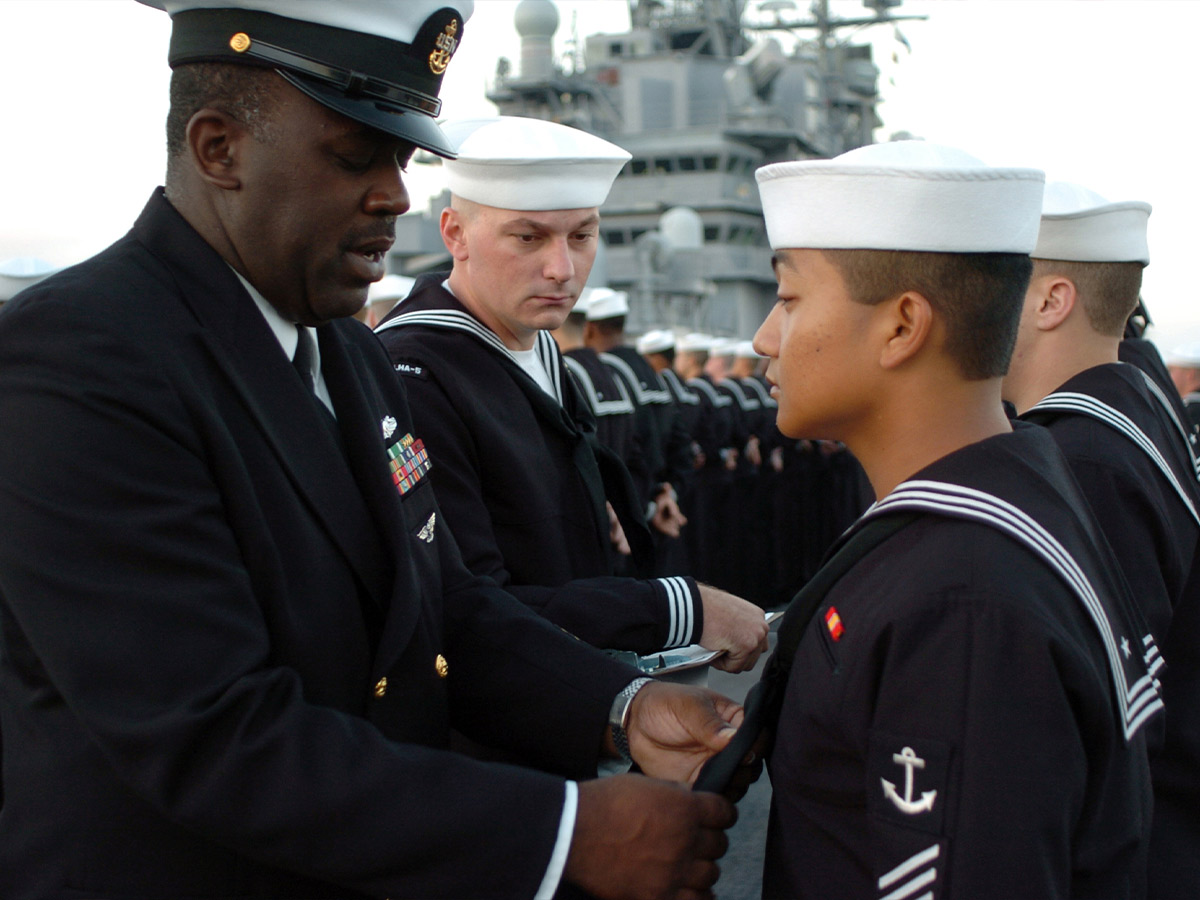
In 2008, the U.S. Army adopted the blue Army Service Uniform, replacing the green service uniform that had been in use since 1954. The blue service uniform was authorized in 2008, standardized in 2010, and then required in 2014. This return to the past blends contemporary functionality with historical inspiration.
Considering the former green uniform was associated with the Cold War era and the Vietnam War, the blue service one was meant to be a modern and versatile option. The blue uniform includes a midnight blue coat worn with lighter blue trousers for men, and for women, the same coat with either the same colored slacks or a skirt.
Introduction of the Pink-Tan Combo (2020)

The pink and tan uniform was established in 2020 by the U.S. Army. The updated “Pink and Tan” service uniform features a refined design inspired by the iconic WWII-era uniform, injecting a sense of heritage and pride into the modern force.
New soldiers and drill sergeants were the first to wear the pink and tan uniform, with the rest of the army expected to wear it by 2028, according to the Association of the United States Army.
Chest Rigs and Modular Packs (Modern Era)
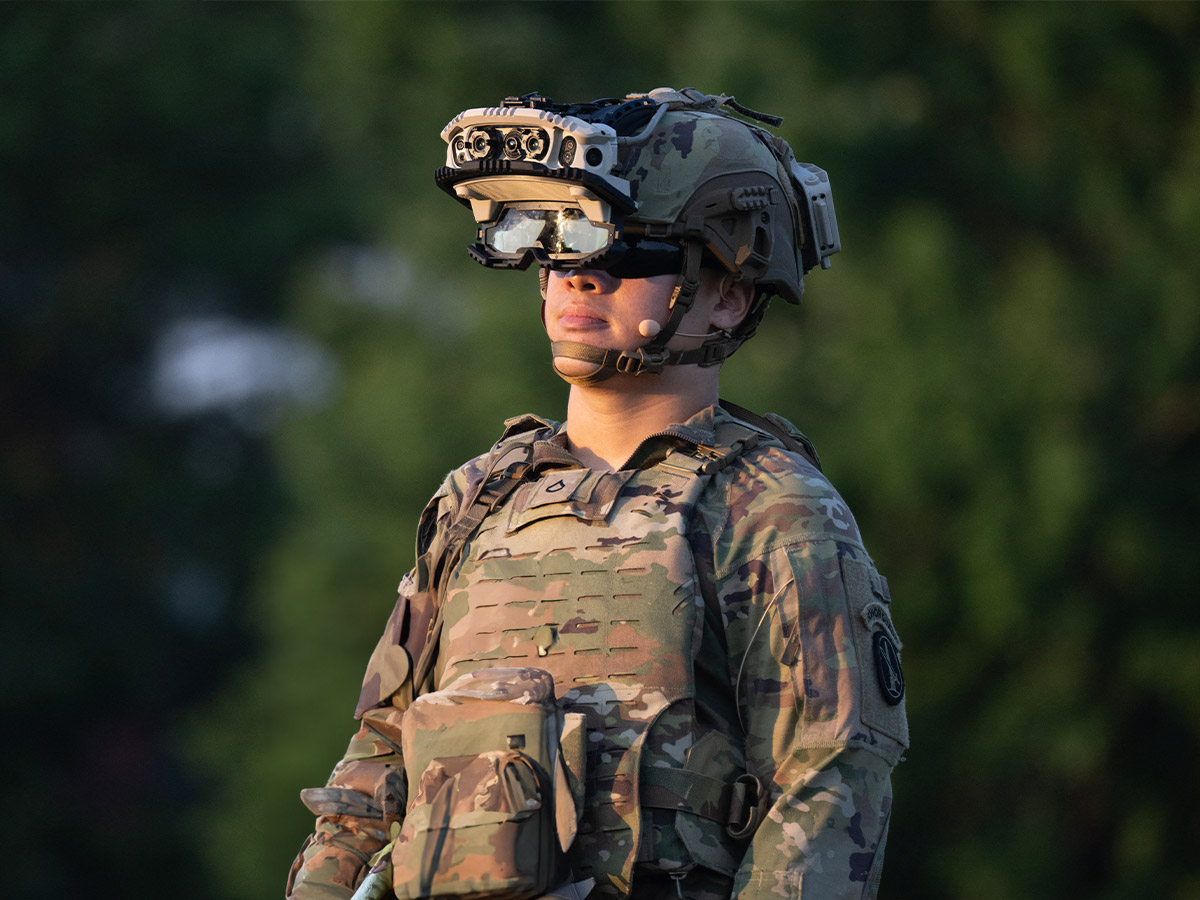
Modern uniforms now integrate modular packs and chest rigs tailored for quick access to gear, adapting to the needs of soldiers in fast-paced combat scenarios. This tool enhances a soldier's performance on the field, making it easier for them to navigate all the equipment they wear.
They bring both functionality and purpose to a soldier’s job, acting as vital components of their gear. There’s a balance of speed and versatility that brings cohesive movement on the field and among the ranks.
 Author
Jennifer Freehill
Last Updated: August 27, 2025
Author
Jennifer Freehill
Last Updated: August 27, 2025